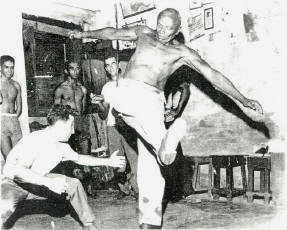Currently, I split my schedule between individual classes and small group classes (from 2-8 students) and people often ask me which one I prefer. Here are three advantages of each type of teaching format:
Individual Classes
- You can tailor the material to the individual. A teenager studying English in order to travel to Disneyland is different from a college student learning English in order to study in the U.S., which is very different from a financial analyst learning English in order to take part in company briefings.
- You can go at the student’s own pace and focus on the areas that are important to him or her – some students are strong speakers and terrible listeners; others are spectacular readers and weak speakers; others are grammar whizzes but have limited vocabulary, etc. Individual classes allow the teacher the freedom to spend longer working on problem areas for that particular student.
- Limited handouts to print and copies to make. This might seem trivial, but a printer cartridge that costs $16 in the U.S. costs the equivalent of $40 in Brazil. With individual students, you only have to make one copy of everything – and are spared the aggravation of making 8 copies for your group and then only having 3 show up.
Group Classes
- More dynamic (and fun) classes! You can have the students work together in pairs or threes; you can play games and have teams of students compete against each other; you can mix things up by having them stand up and mingle during an activity. None of this is really possible with individual classes.
- No make-up classes. With groups, the school sets the semester schedule and if a student misses a class, tough luck – the class moves on without them. With individuals, if they cancel with more than 24 hours’ notice, I then have to schedule a time to make up the class, which is nearly impossible in my already-packed schedule.
- Less prep time. Because of the aforementioned group dynamic, fewer activities are needed to fill the time in a group class. You can often set up a game or discussion and the students will pretty much run it themselves for 20 or 30 minutes, while you simply monitor the process and answer any questions that arise.
So which one do I prefer? Group classes – mainly because of that dynamic aspect. Even when the group is only two students, you can have them play competitive or collaborative games that break the rhythm of textbook learning and are extremely useful for communication practice.



